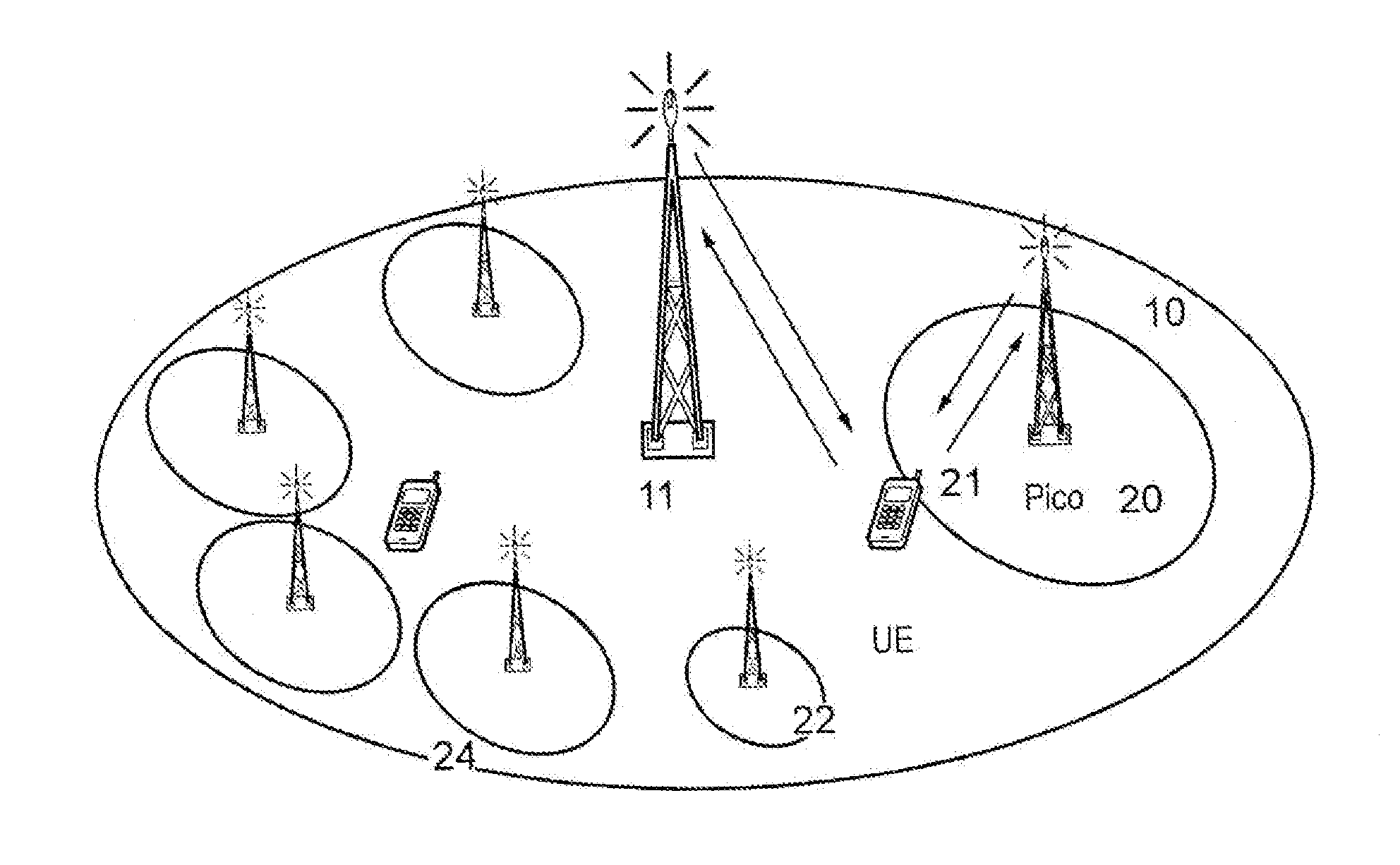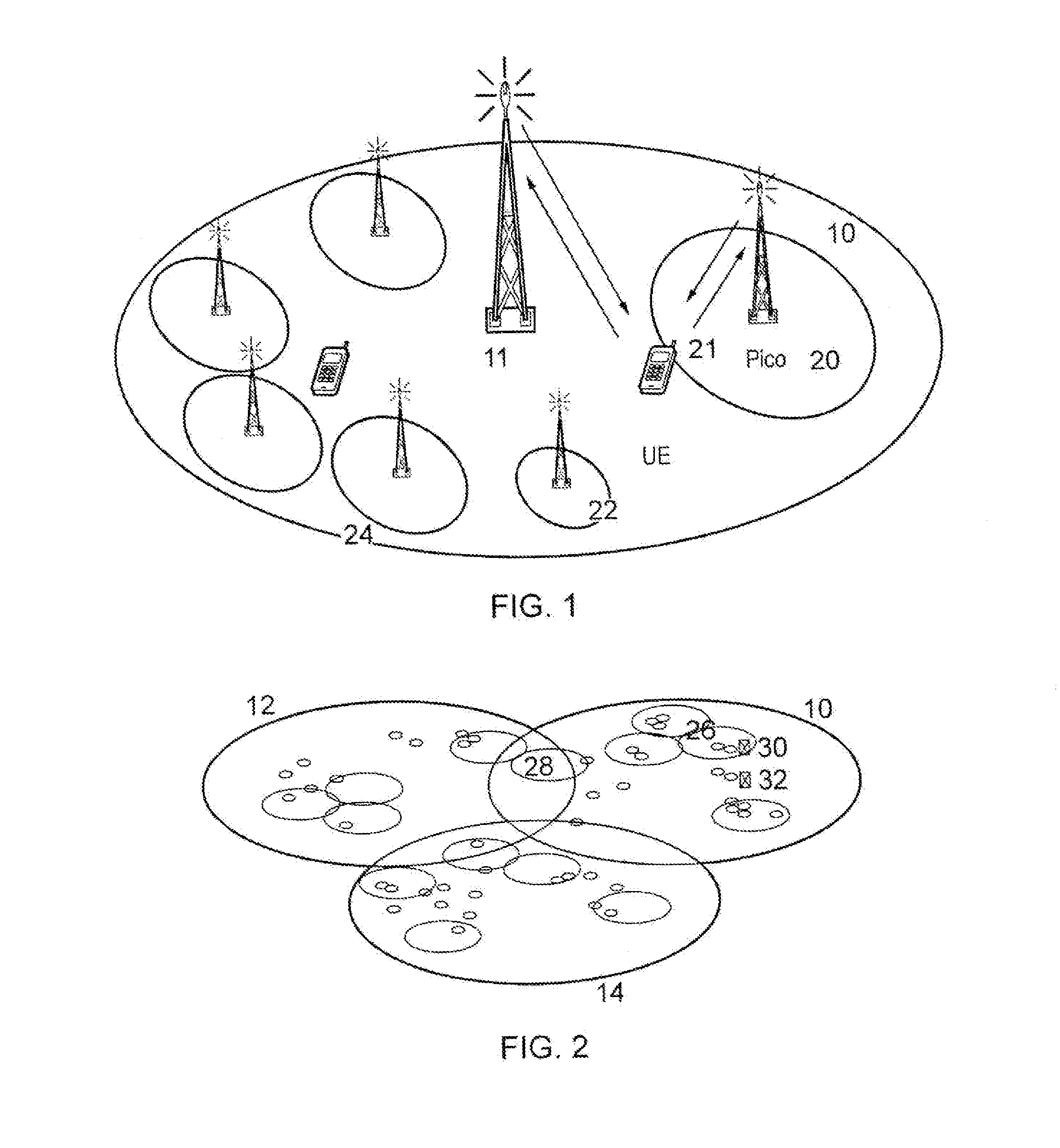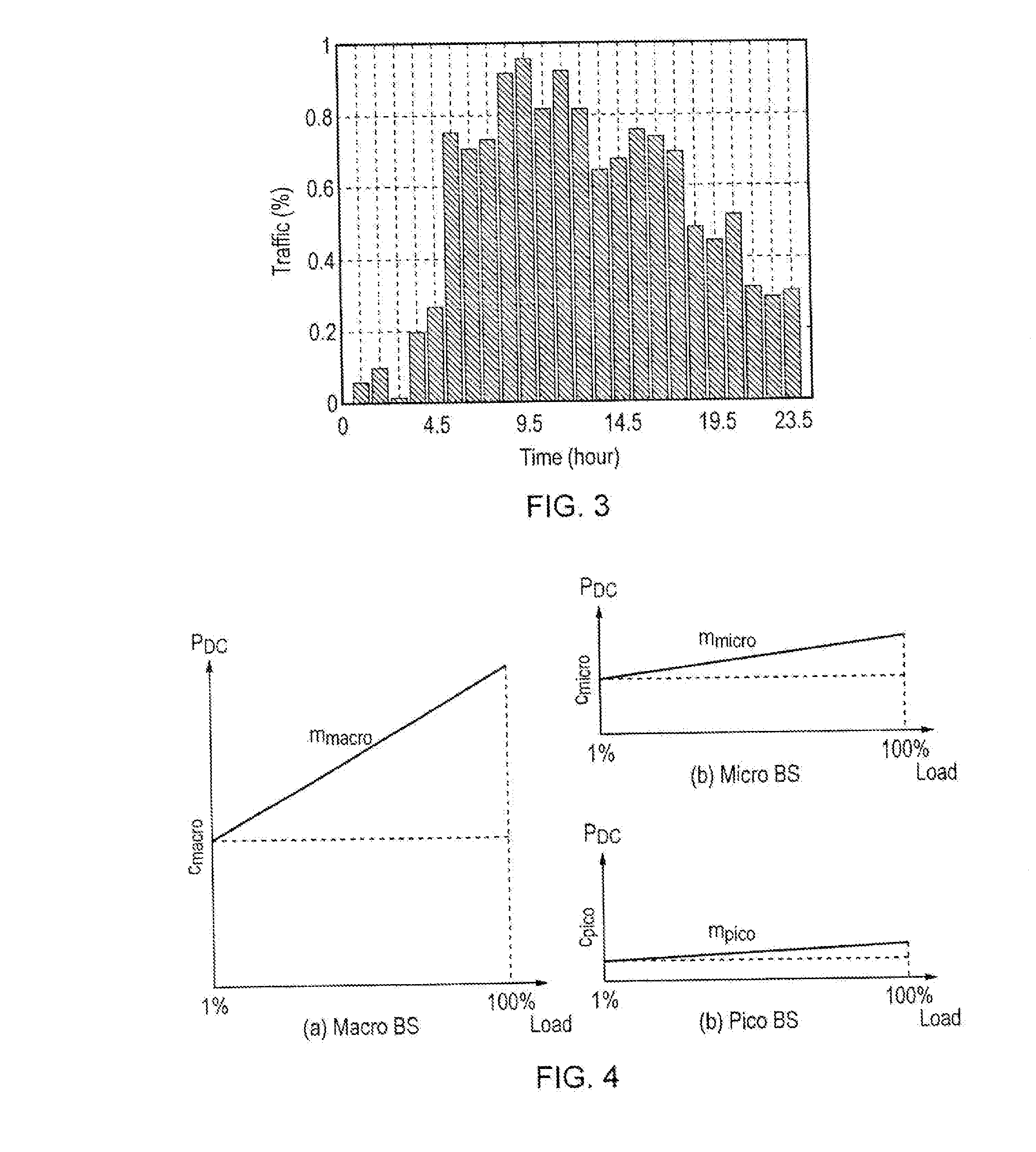Cell activation and deactivation in heterogeneous networks
a heterogeneous network and cell technology, applied in the field of cell activation and deactivation in heterogeneous networks, can solve the problems of reducing operational costs and causing traffic load in each geographical area, and achieve the effect of optimizing the energy efficiency of the heterogeneous cellular network
- Summary
- Abstract
- Description
- Claims
- Application Information
AI Technical Summary
Benefits of technology
Problems solved by technology
Method used
Image
Examples
Embodiment Construction
[0050]Referring again to FIGS. 1 and 2, the general principle for cellular network design is that the Macro cells will provide blanket coverage to the network's operating region, white the Micro and Pico cells are installed by the operator to provide capacity to targeted hotspots. Hence we assume that the Macro cells will be always operating (in the ON state) and the smaller Micro and Pico cells can be turned ON or OFF depending on the capacity demand.
[0051]Turning cells ON and OFF in this way will necessitate handovers of users between the current serving cell, which is determined to be fumed OFF, and a compensation cell. Techniques for such handovers in, for example, an LTE-based wireless communication system are well known and will not foe described here. However, it is noted for the purposes of the subsequent description that conventional handover in LTE involves a reporting event A3, i.e. triggering the UE to send a Measurement Report when a neighbouring cell becomes better tha...
PUM
 Login to View More
Login to View More Abstract
Description
Claims
Application Information
 Login to View More
Login to View More - R&D
- Intellectual Property
- Life Sciences
- Materials
- Tech Scout
- Unparalleled Data Quality
- Higher Quality Content
- 60% Fewer Hallucinations
Browse by: Latest US Patents, China's latest patents, Technical Efficacy Thesaurus, Application Domain, Technology Topic, Popular Technical Reports.
© 2025 PatSnap. All rights reserved.Legal|Privacy policy|Modern Slavery Act Transparency Statement|Sitemap|About US| Contact US: help@patsnap.com



